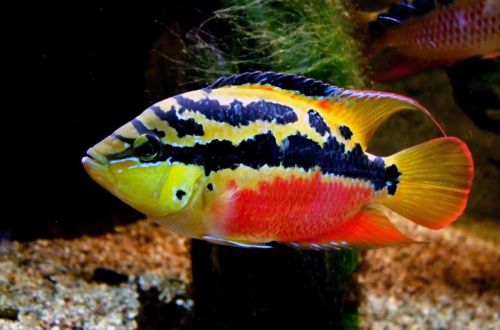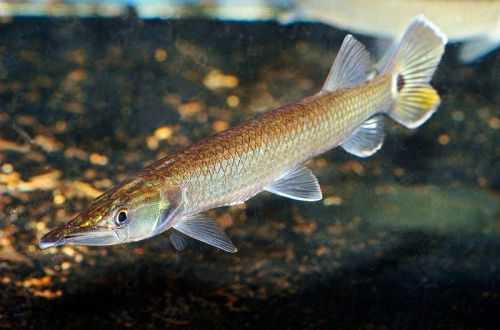
Aphiocharax
The red-finned tetra or Afiocharax, scientific name Aphyocharax anisitsi, belongs to the Characidae family. It was first described by Eigenman and Kennedy in 1903 during an expedition to South America. It is a favorite of many aquarists not only for its beautiful appearance, but also for its amazing endurance and unpretentiousness. Fish does not require increased attention to its content. An excellent choice for beginner aquarists.
Contents
Habitat
Inhabits the basin of the Parana River, covering the southern states of Brazil, Paraguay and the northern regions of Argentina. It occurs everywhere in various biotopes, mainly in places with calm water and dense aquatic vegetation.
Brief information:
- The volume of the aquarium – from 80 liters.
- Temperature – 20-27°C
- pH value is about 7.0
- Water hardness – any up to 20 dH
- Substrate type – any dark
- Lighting – subdued or moderate
- Brackish water – no
- Water movement is weak
- The size of the fish is about 6 cm.
- Food – any food
- Temperament – peaceful, active
- Keeping in a flock of 6-8 individuals
Description
In adulthood, the fish reaches a little less than 6 cm in length. The color varies from beige to silver, with a turquoise tint. A distinctive feature of the species are the red fins and tail.
Similar body shape and coloration has a related species Afiocharax alburnus. However, its fins do not usually have red tints, however they are often confused.
Food
In the home aquarium, popular live, frozen and dry foods of suitable sizes will form the basis of the daily diet. Feed several times a day, in an amount eaten in about 3 minutes.
Maintenance and care
The optimal size of the aquarium for a small flock of 6-8 individuals starts from 80 liters. The width and length of the reservoir is more important than its depth. The design is arbitrary, provided that there is sufficient space for swimming.
They are considered hardy and unpretentious species. In some cases, they can live in an unheated aquarium (without a heater) if the room temperature is above 22–23 ° C. Able to adapt to a wide range of hydrochemical parameters.
Despite their hardiness, however, they need clean water (like all other fish), so you can not neglect the maintenance of the aquarium and the installation of the necessary equipment, primarily a filtration system.
Behavior and Compatibility
A peaceful flock species, it is recommended to keep at least 6 individuals in the community. With a smaller number, they become shy. Males during the mating season are overly active, chasing each other, trying to take a dominant position in the group. However, such activity does not turn into aggression.
Peaceful in relation to other species of comparable size. Good compatibility is observed with other Tetras, small catfish, Corydoras, Danios, etc.
Breeding / breeding
Breeding is recommended to be carried out in a separate tank, at least 40 liters in size and with water parameters that match those of the main aquarium. In the design, small-leaved low plants are used, which are evenly distributed over the entire surface of the soil.
An important feature – the aquarium must be equipped with a lid with a high vault, about 20 or more centimeters above the water surface. During spawning, the fish jumps out of the tank at the moment of spawning, and the eggs fall back into the water.
Fish are able to give offspring throughout the year. The signal for spawning is an abundant diet with high protein feed. After a week of such a diet, the females are noticeably rounded from caviar. This is the right moment to transfer the females, along with the strongest male partner, to a separate tank. At the end of spawning, the fish are returned back.
Fish diseases
Health problems arise only in case of injuries or when kept in unsuitable conditions, which depresses the immune system and, as a result, provokes the occurrence of any disease. In the event of the appearance of the first symptoms, first of all, it is necessary to check the water for the excess of certain indicators or the presence of dangerous concentrations of toxic substances (nitrites, nitrates, ammonium, etc.). If deviations are found, bring all values back to normal and only then proceed with treatment. Read more about symptoms and treatments in the Aquarium Fish Diseases section.





